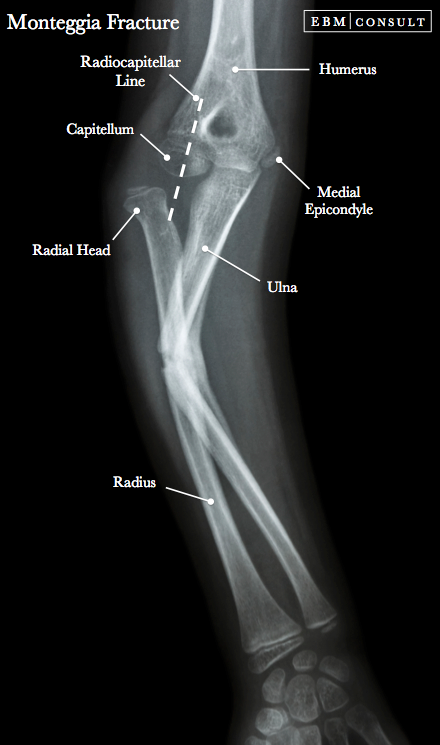Monteggia Fracture - Ulnar Fracture & Radial Head Dislocation
Summary:
- The combination of a radial head dislocation with an ulnar fracture is most commonly known as a Monteggia fracture.
- Though more than one radiographic view should be obtained, it is most commonly seen on an AP radiograph view of the elbow and forearm.
- Get orthopedics involved early, reduce the radial head dislocation and ulnar fracture, and if an open fracture give a tetanus shot, irrigate wound with sterile water, give IV antibiotics, splint and admit to hospital. Failure to treat appropriately can lead to joint instability and inability to supinate and pronate the forearm normally.
Monteggia Fracture
|
|---|
Editors: Anthony J. Busti, MD, PharmD, FNLA, FAHA


